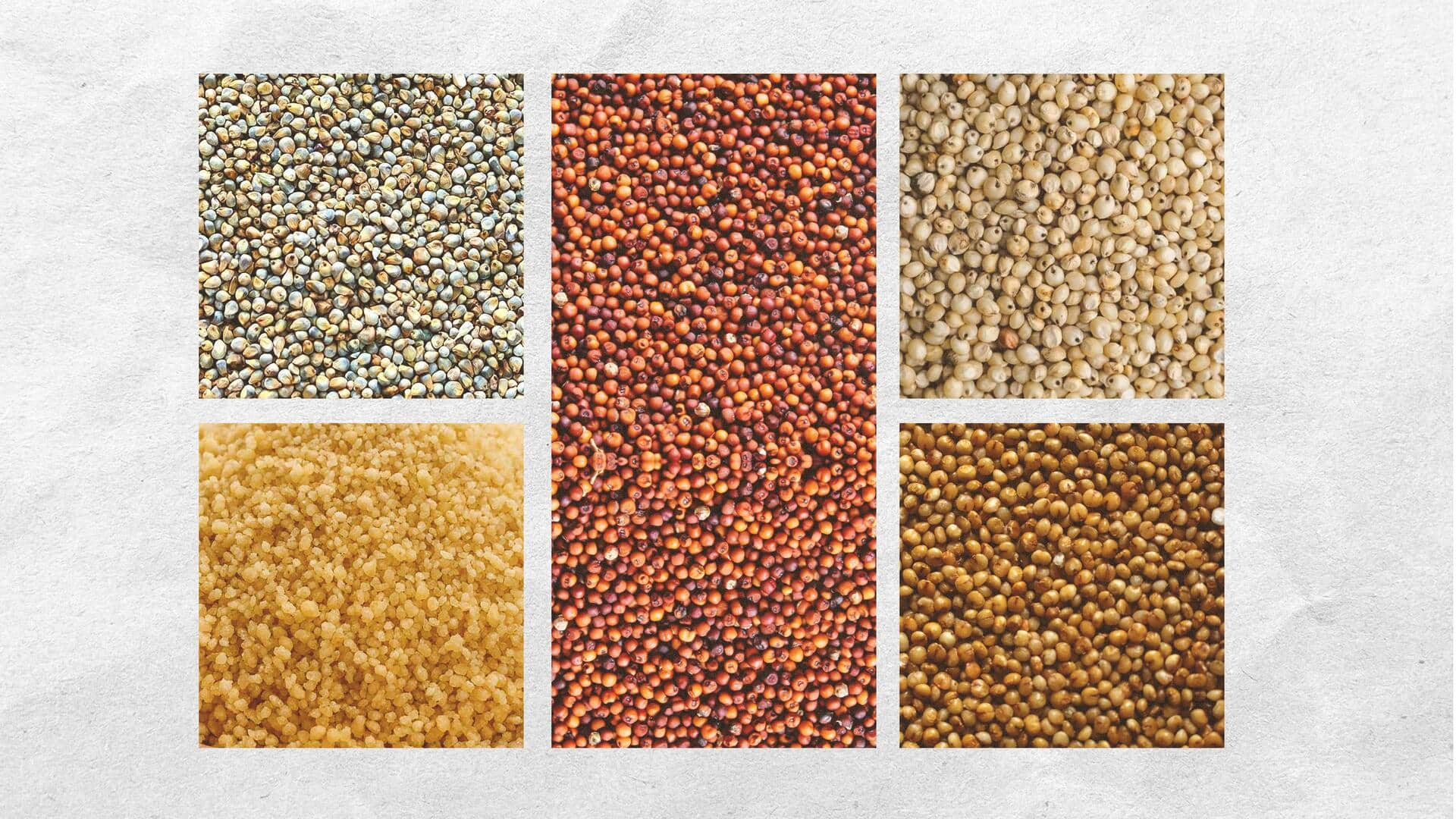
Delicious ways to enjoy these 5 millet varieties
What's the story
Millets are considered ancient grains that were cultivated even before other grains like wheat. Millets can grow even in harsh conditions where less hardy grains cannot. This is why the United Nations (UN) designated 2023 as the International Year of Millets, aiming to use them to fight hunger. Here are some tasty ways to include various types of millet in your everyday meals.
Jowar
Sorghum
Sorghum is widely cultivated in India, especially in Maharashtra and Karnataka, and is locally known as jowar. It is also grown in Central America, Africa, and parts of southern Asia. You can cook sorghum grains to make a hearty porridge and add fruits, nuts, and seeds to enhance its flavor and nutrition. Sprouted or cooked sorghum grains can also be added to salads.
Italian
Foxtail
Foxtail millet is widely cultivated in Asia and is also the second-most grown variety of millet. Also called Italian millet sometimes, these fiber-rich millets are high in vitamins A and E, potassium, and phosphorous. You can relish foxtail millet by incorporating it into flatbreads and cakes. You can also add it to lemon rice, or savor it as foxtail millet kheer for dessert.
Kuttu
Buckwheat
Buckwheat, also known as kuttu in India, is a versatile and commonly used pseudo-cereal grain. It may help reduce blood pressure, promote cardiovascular health, and aid weight loss. Moreover, it is considered diabetic-friendly. Besides kuttu roti, khichdi and upma, buckwheat can also be used to make pizzoccheri, a type of Italian wholewheat pasta served with cheese and cabbage.
Ramdana
Amarnath
Rich in protein, dietary fiber, B vitamins, iron, phosphorus, magnesium, and manganese, amarnath is gluten-free. Also known as ramdana, rajgira, and chola, it can be boiled, like rice, ground into a gluten-free flour for baking, popped like popcorn or made into a nutritious porridge. This millet not only helps fight greying and hair loss but also lowers cholesterol levels and cardiovascular disease risk.
Kodon
Kodo
Kodo millets digest easily and strengthen the nervous system. Rich in B vitamins, calcium, iron, magnesium, potassium, and zinc, it is great for gluten-intolerant individuals. The kodo millet is used to make payasam or kheer. It can be ground into flour and used to make various dishes like khichdi, dalia, dosa, pongal, porridge, biscuits, and noodles.